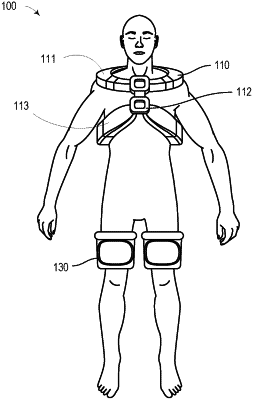| CPC A61F 5/3784 (2013.01) [A61G 13/04 (2013.01)] | 18 Claims |

|
1. A system for restraining a patient before, during, or after surgery, the system comprising:
an upper body restraint configured to surround at least a portion of a chest of the patient, the upper body restraint comprising:
a first annular restraining portion configured to encircle a neck of the patient and comprising straps configured to extend over shoulders of the patient and downwards along a back of the patient;
a second restraining portion configured to encircle the chest of the patient and to extend under armpits of the patient;
a securing mechanism, wherein the securing mechanism is configured to directly and reversibly lock the first restraining portion to the second restraining portion such that the chest of the patient is configured to be reversibly secured within the upper body restraint;
a supporting portion configured to distribute weight of the patient across a torso of the patient; and
attachment mechanisms extending laterally from the straps of the upper body restraint for selectively securing the upper body restraint to a table,
wherein the upper body restraint is configured to reversibly secure the patient to the table, and when the attachment mechanisms are connected to the upper body restraint and the table, the patient's abdomen is in a fixed position on the table.
|